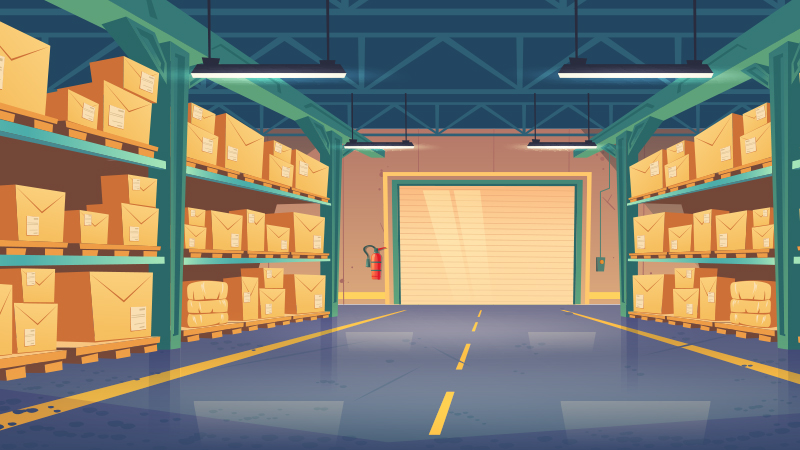
Global Warehousing Market Size Estimated to be Valued at $285 Billion in 2022


The global demand for warehousing has witnessed a sharp increase in 2021 and is slated to increase by 7 percent year-on-year to reach $285 billion in 2022 and 326.3 billion by 2024. Automation has been instrumental in reducing human interaction and improving bottom lines. The surge in demand is led by eCommerce, pharmaceuticals like vaccines, and online buying of groceries. Wholesalers and 3PLs have been relying on onshore inventories to effectively address the supply chain disruptions. Besides, the need for modern urban distribution centers for ensuring hassle-free last-mile deliveries, trade embargos, and geopolitical issues have been the driving factors for regional demand growth of warehousing and cold storage.
The warehousing space demand was 300 million square feet in Q3 of 2021 for North America. The space requirement in the U.S is expected to reach approximately 420 to 450 million square feet by 2022. It is anticipated that the demand-supply gap will be filled in 2022 as new warehousing space is rapidly being created. Vacancy rates are estimated to stabilize around 5 percent by the end of 2022. APAC, Europe, and the rest of the global nations also had to contend with vital demand-supply gaps such as the demand for Grade A warehouses, last-mile delivery needs, and high warehouse space rental rates led by rising construction costs. Automation and smart warehousing, and technology-driven distribution systems are expected to favor the industry in the coming year.
“Warehouse automation is the step forward to close the demand-supply gap. Businesses are looking for Class A warehouse spaces that leverage automation, and technology to enhance adherence to safety protocol during the pandemic and ensure the same-day delivery options that e-commerce demands today for fostering differentiation. Supply chain bottlenecks can be resolved by adopting the China-plus-one strategy where products are sourced from alternative sources such as Thailand, Malaysia, and Taiwan,” said Lalitha Thyagaraja, Senior Analyst at Beroe. “The spoke and wheel system where larger hubs in city areas feed local warehousing systems in tier 2 and tier 3 markets is also an interesting option. Some warehousing companies strive to add value by offering design and automation that syncs with the manufacturing company’s tracking systems. All-in-all technology-driven warehousing services is the sector to watch”.
Sustainability is another crucial component of the intelligent warehousing service. Renewable energy resources are deemed crucial in generating electricity to meet growing demand. Green buildings as warehouses and waste-to-energy solutions are the keys to sustainability and cost-effectiveness. The use of electric cars, three-wheelers, and battery-operated carts for last-mile delivery are options that the warehouse logistics teams are exploring.
The cold storage warehouses are needed by the food and pharma industry. The clinical trials in all three phases require a rapid roll-out of the COVID-19 vaccines. The phase 3 trials require cold chain supply in massive numbers, and the warehousing companies are rapidly ramping up services in the department. The global demand for the cold chain warehouse segment was slated at $240.8 billion in 2021 and projected to reach $585.3 billion by 2026, recording a CAGR of 10–14 percent. This sector is also technology-dependent to create smart doors, occupancy sensors, and building maintenance systems to save cost. Recycled materials like wood and steel are used to build the cold chain warehouses to ensure sustainability.
“Vaccines, medicines, and food require optimal temperature for storage and transport. Warehouse logistics systems need to be technology-driven to ensure that goods are packaged and transported safely. IoT solutions like temperature mapping sensors, RIFD tags, and smart packaging are and can all continue to be a part of the solution to cut costs, yet transport materials in optimal conditions”, said Lalitha Thyagaraja - Senior Analyst at Beroe. “Warehousing and supply chain logistics will continue to play an essential role in the last-mile delivery of essential items like food and vaccines. The way forward is to increase capacity, use technology to ramp up storage facilities, and keep costs and quality under control".
Recommended Reads:
Related Insights:
View All
Get more stories like this
Subscirbe for more news,updates and insights from Beroe






